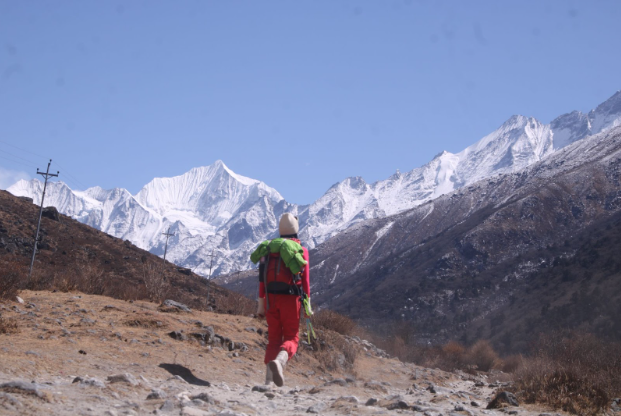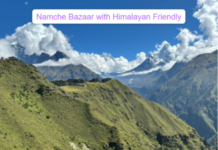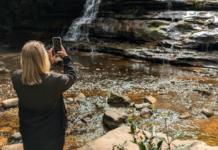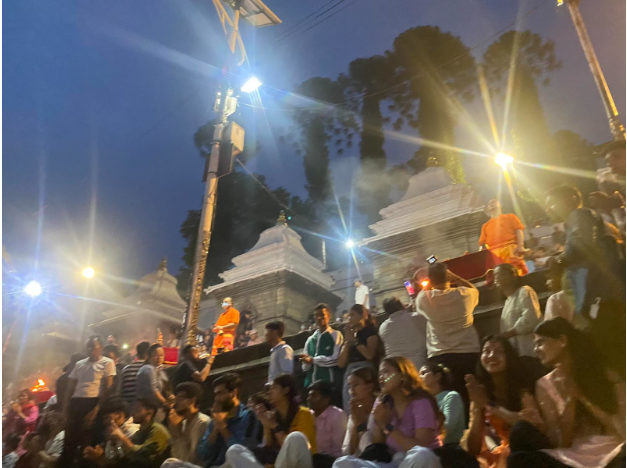The Langtang Valley Trek is one of Nepal’s most accessible and rewarding Himalayan adventures, yet remains surprisingly less explored than its Everest and Annapurna counterparts. Located just north of Kathmandu near the Tibetan border, Langtang offers an extraordinary blend of natural beauty, cultural authenticity, and alpine tranquility—all within a relatively short trekking duration.
Ideal for those seeking stunning mountain views without the crowds, this trek leads you through forested hills, glacier-fed rivers, yak pastures, and traditional Tamang settlements framed by snow-capped peaks.
Introduction to the Langtang Region
The Langtang region lies within the Langtang National Park, Nepal’s first Himalayan conservation area, established in 1976. The valley is carved by the Langtang Khola river and surrounded by towering peaks such as Langtang Lirung (7,227 m), Dorje Lakpa, and Ganesh Himal. The trail winds through dense rhododendron forests, Buddhist villages, and alpine landscapes rich with biodiversity.
Despite suffering severe damage during the 2015 earthquake, the area has rebounded with improved infrastructure, welcoming trekkers once again to its peaceful terrain.
Langtang Valley Trek Overview
- Trek Duration: 7 to 10 days
- Maximum Elevation: 4,984 meters (Tserko Ri)
- Trek Difficulty: Moderate
- Start/End Point: Syabrubesi (drive from Kathmandu)
- Best Seasons: Spring (March–May) and Autumn (September–November)
- Permits Needed: Langtang National Park Permit & TIMS Card
Key Highlights of the Langtang Valley Trek
1. Scenic Drive from Kathmandu
The journey begins with a dramatic drive from Kathmandu to Syabrubesi, the trek’s trailhead. This 6–7 hour ride takes you through rolling hills, terraced farms, and charming villages.
2. Alpine Forests and Wildlife
As you ascend through the Langtang National Park, you’ll walk through dense forests of pine, oak, and rhododendron. Wildlife sightings are common and may include red pandas, langurs, Himalayan monals, and musk deer.
3. Tamang and Tibetan Culture
The Langtang region is home to the Tamang people, whose culture shares strong roots with Tibetan traditions. You’ll see prayer wheels, stone mani walls, Buddhist stupas, and visit ancient gompas (monasteries), particularly in Kyanjin Gompa village.
4. Kyanjin Gompa and Cheese Factory
One of the trek’s main highlights is the Kyanjin Gompa village (3,870 m), the final settlement before reaching higher viewpoints. Nearby is a traditional yak cheese factory, which has been operating since the 1950s and still uses local milk from highland yaks.
5. Hike to Tserko Ri
From Kyanjin Gompa, an optional day hike to Tserko Ri (4,984 m) offers one of the best panoramic views in the region. You’ll see snow-draped mountains stretching across the horizon—an unforgettable experience at sunrise.
Sample Itinerary (8 Days)
Day 1: Drive from Kathmandu to Syabrubesi (1,460 m)
Enjoy scenic views as you travel north into the Rasuwa District.
Day 2: Trek to Lama Hotel (2,470 m)
Follow the Langtang River through subtropical forests and waterfalls.
Day 3: Trek to Langtang Village (3,430 m)
Climb steadily past Ghoda Tabela to the rebuilt Langtang village.
Day 4: Trek to Kyanjin Gompa (3,870 m)
Enter alpine terrain with incredible views of Langtang Lirung.
Day 5: Acclimatization and hike to Tserko Ri (4,984 m)
A challenging but rewarding day hike to the best viewpoint of the trek.
Day 6: Return to Lama Hotel
Retrace your steps while descending to lower elevations.
Day 7: Trek to Syabrubesi
A pleasant downhill walk back to the starting point.
Day 8: Drive back to Kathmandu
Conclude your journey with a return trip to the capital.
Accommodation and Meals
Teahouses along the Langtang route offer simple but cozy rooms, mostly twin-sharing, with communal dining spaces. Facilities have improved since the earthquake, and local hosts are known for their hospitality.
Typical Meals Include:
- Dal Bhat (rice, lentil soup, vegetables)
- Tibetan bread with honey or jam
- Noodle soup, fried rice, and pancakes
- Hot drinks like ginger tea, milk tea, and instant coffee
Challenges and Considerations

While this trek is considered moderate, preparation is still essential. Tserko Ri involves a steep ascent and reaches nearly 5,000 meters, where altitude sickness can become a concern.
Preparation Tips:
- Engage in cardio and leg-strengthening exercises 3–4 weeks before the trek.
- Stay hydrated and ascend gradually to acclimatize properly.
- Carry essential gear like a sleeping bag, headlamp, water purifier, and warm layers.
Why Choose Langtang Over Other Treks?
- Proximity to Kathmandu: The trailhead is reachable by road—no domestic flights required.
- Fewer Crowds: Compared to Everest and Annapurna, Langtang sees fewer trekkers, offering a more serene experience.
- Cultural Depth: Experience authentic Tamang and Tibetan Buddhist lifestyles untouched by mass tourism.
- Stunning Views: Despite being less popular, the views of Langtang Lirung and surrounding peaks are as awe-inspiring as anywhere in Nepal.
Conclusion
The Langtang Valley Trek is a hidden jewel in Nepal’s trekking crown. It combines majestic Himalayan views, rich cultural immersion, diverse wildlife, and manageable trekking conditions—all within a short itinerary. Whether you’re a first-time trekker or a seasoned adventurer looking for a quieter, soulful journey, Langtang delivers in every way.
As Nepal’s “forgotten” valley begins to rebuild its reputation post-earthquake, now is the perfect time to explore it. With your presence, you not only discover an extraordinary corner of the Himalayas but also support the resilient communities that call this region home.
Frequently Asked Questions (FAQ)
Q1: Is the Langtang Valley Trek suitable for beginners?
Yes, it’s considered one of the more beginner-friendly Himalayan treks. However, basic fitness is required, especially if you plan to hike Tserko Ri.
Q2: Do I need a guide or porter for this trek?
While not mandatory, hiring a licensed guide is highly recommended for cultural insight and safety. A porter can help carry your load and enhance your experience.
Q3: Are permits required for the Langtang Trek?
Yes. You need:
- Langtang National Park Permit
- TIMS (Trekkers’ Information Management System) Card
These are arranged easily in Kathmandu or through trekking agencies.
Q4: What is the highest point of the trek?
The optional Tserko Ri day hike takes you to 4,984 meters, offering panoramic mountain views. Without this hike, Kyanjin Gompa (3,870 m) is the highest sleeping altitude.
Q5: What are the risks of altitude sickness?
Altitude sickness is possible after 3,000 meters. Acclimatize properly, stay hydrated, and inform your guide if you feel unwell.


















